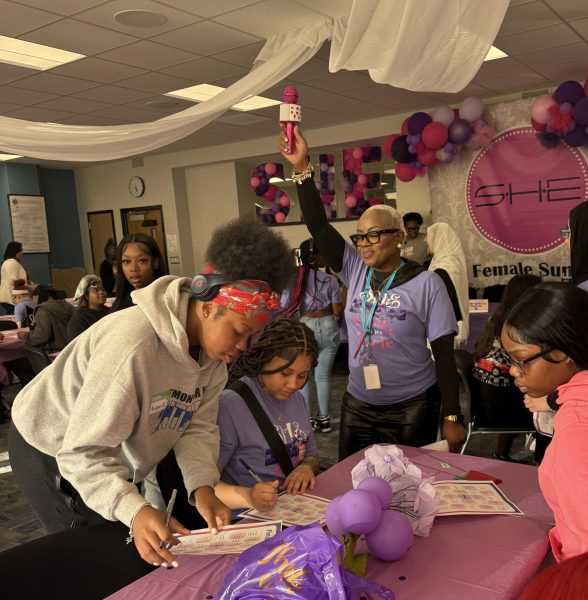Don’t Judge Fast Fashion Shoppers
The truth behind fast fashion and its consumers, a highly controversial and debated topic.
Whether it’s SHEIN, H&M, Zara, or Fashion Nova, in this day and age, encountering fast fashion brands is inevitable. There seems to be an endless amount of websites flooding social media feeds, all of which promise trendy, fashion forward clothing that won’t break the bank. Many consumers, however, aren’t aware of the underlying costs of this billion-dollar industry; or, they shop fast fashion for various reasons and are judged harshly for it.
The fashion industry in general isn’t truly sustainable. What is considered to be “sustainable fashion” still leaves a toxic imprint on the environment as all fashion creates “greenhouse gas emissions during manufacture” and “less than 1% of clothing is recycled into new clothing” (goodonyou.eco). However, compared to “sustainable” means of producing clothing, fast fashion is objectively worse. Cheap and trendy, fast fashion aims to mimic clothing worn by celebrities on the catwalk. It’s manufactured at “breakneck speed to meet consumer demand” (goodonyou.eco). The core of fast fashion is to get new styles on the market quickly in order for consumers to attain and discard them after a few wears. The global fast fashion industry is a multi-billion one that maintains its height at the Western market by playing into the idea that rewearing clothing is a fashion faux pas.
In a world of internet keyboard warriors and TikTok activists, I know the case for justifying fast fashion is rightfully a lost cause. Fast fashion is responsible for 20% of the wastewater worldwide (princeton.edu), contributes 85% of all textiles in landfills (greenbusinessbureau.com), and exploits and underpays garment workers in foreign countries (goodonyou.eco). Considering the impact of fast fashion, I am merely suggesting that the people who shop fast fashion should not be judged too harshly. It’s important to note that the main consumers of fast fashion are the poor and those who are plus size (grin.com). Affordable, size-inclusive clothing isn’t accessible. It’s important to give people the benefit of the doubt and the idea that everyone can afford to shop sustainably, but choose not to, is inherently classist. Those who are struggling financially resort to sites such as SHEIN because it’s one of the few times they can afford something new. The unrealistic beauty standards placed on women of being good-looking and trendy in order to be considered attractive is one of the main reasons why female consumers are the largest demographic to shop unsustainably.
Don’t blame the shopper, blame the billion-dollar corporations capitalizing off of their vulnerable audience. It’s important to note that unsustainable shopping isn’t always a choice people are aware of and sometimes, fast fashion stores are the only clothing shops available in a certain area. Yes, secondhand clothing stores such as Goodwill and Plato’s Closet are an available resource, but an increasing problem is the romanticization of thrift stores, leading to an uptick in their prices. Many people have started recording their “thrift store hauls” and “vintage clothing” finds on Youtube and Tiktok. While I understand that this is an attempt to destigmatize shopping secondhand, it has created a new problem — shopping secondhand to fit an aesthetic, regardless of financial need, has led to thrift stores boldly marking up their prices for used clothing.
As for the people who post videos of their $500 SHEIN hauls, they deserve their own tangent. My argument is centered on how genuinely poor people do not deserve judgement if they are shopping out of necessity. If somebody is able to spend $500 on clothing they will likely use and discard after a few wears, they clearly have enough to shop sustainably instead. The people who shop endlessly for style, hauls, and a new outfit for their Instagram are in a category of their own and don’t deserve grace towards the nature of their shopping habits.
I, like many others, desire to contribute what I can to making the fashion industry more sustainable. In an effort to contribute good, I ask myself a few key questions when shopping:
1. Is this something that I will actually wear? Would I wear this in a year or is this just a trend?
2. If I came back to this item in the store or on the website in a week, would I feel the same way about purchasing it?
I advise those who purchase their clothing, regardless of where they shop, to buy “staple” and timeless items. Buy items that you know you will take good care of and wear over and over. A helpful reminder is if there are items in your closet that you can’t remember, then you have too many clothes. In this day and age, it’s near impossible to shop sustainably but I urge you to try limiting your consumerism and not to judge those who shop fast fashion.








